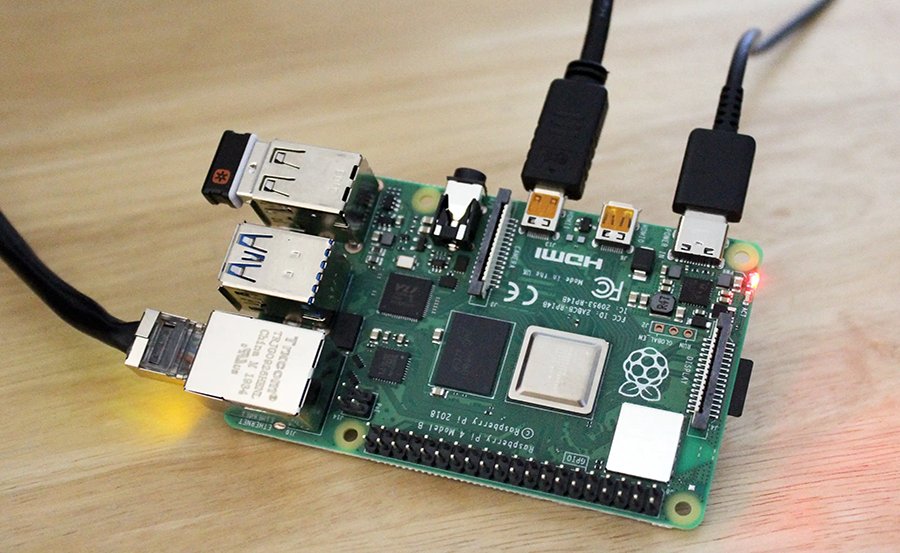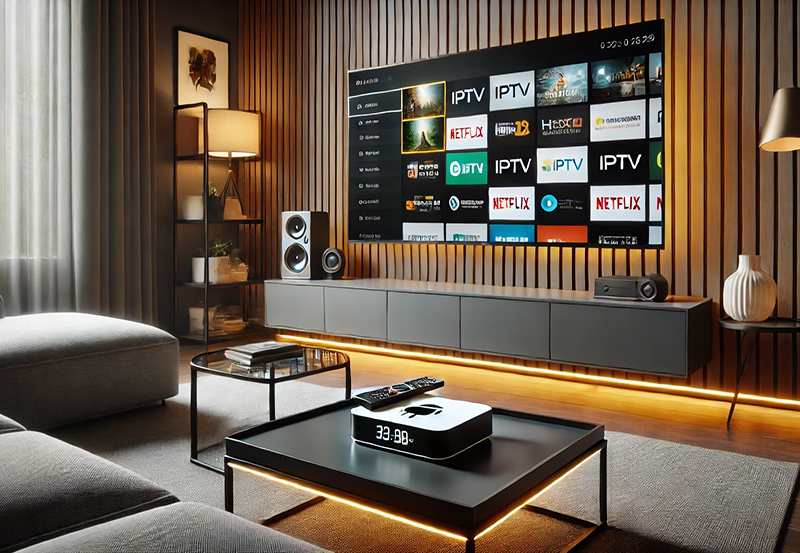In recent years, the Raspberry Pi has emerged as a revolutionary piece of technology that has captured the imagination of hobbyists, engineers, and educators alike. Whether you’re a seasoned tech aficionado or a newcomer to the field of computing, this tiny computer holds immense potential. Its versatility allows users to create a wide variety of projects, from simple coding exercises to complex home automation systems. Yet, for many beginners, the real question remains: how does one get started with Raspberry Pi?
The Raspberry Pi offers a plethora of possibilities and projects. Understanding how to navigate this can become quite overwhelming. But don’t worry—this guide aims to break down those barriers, showing you the essential steps to begin this exciting journey. By the end of this guide, you’ll know more than just plugging in wires; you’ll have a roadmap to explore, create, and innovate.
Understanding the Raspberry Pi
What is Raspberry Pi?
Raspberry Pi is essentially a series of small, single-board computers. Originally designed with the educational context in mind, Raspberry Pi helps individuals learn computing and programming without breaking the bank. Its affordability and compact size have contributed significantly to its success globally.
Smart Insight:
Unlock premium content with Buy IPTV online, offering access to global channels at your fingertips.
This little device packs a punch despite its small stature. With various models available, each Raspberry Pi comes with its unique set of features, allowing users to tailor their projects according to specific needs and objectives. From educational tools to the foundation of smart devices, the applications are virtually limitless.
Why Choose Raspberry Pi?
The question isn’t just “what” Raspberry Pi is but “why” it has become such a staple in tech communities. Part of its appeal lies in its adaptability. Whether you’re interested in web development, hardware projects, or even gaming, Raspberry Pi offers a platform that’s both accessible and affordable. It’s this combination that encourages innovation and creativity among users.
Additionally, the supportive community around Raspberry Pi provides a wealth of resources. From forums to tutorial videos, finding help when needed is often just a few clicks away. This factor alone makes it an excellent choice for beginners who might need extra guidance along the way.
Getting Your First Raspberry Pi Kit
Essential Components You’ll Need
To start your Raspberry Pi journey, having the right components is crucial. Here’s a quick overview of what you’ll need:
- The Raspberry Pi board itself (Model 4B is recommended for beginners).
- A microSD card (32GB or higher), which serves as the Pi’s storage.
- A compatible power supply, typically a USB-C for recent models.
- Peripherals like a monitor, keyboard, and mouse for setup.
- An HDMI cable to connect your Pi to a display.
- Optional: A case to protect your Pi from physical damage.
Acquiring the Best Raspberry Pi Model for You
When picking a Raspberry Pi model, consider your project goals and budget. For beginners, the Raspberry Pi 4 Model B offers a solid mix of performance and price. With multiple RAM options and an array of ports, it’s versatile enough to handle most projects without any hitches.
If you’re on a budget or are interested in simpler tasks, the Raspberry Pi Zero is an excellent alternative albeit with more limited capabilities. The choice largely relies on what you’re planning to achieve and how much you’re willing to invest in terms of both time and money.
Setting Up Your Raspberry Pi
Initial Installation Steps
Setting up your Raspberry Pi for the first time might seem daunting, but taking it step by step makes it manageable. Begin by preparing your microSD card. You’ll need a computer with an internet connection to download the Raspberry Pi Imager, a handy tool for installing an operating system (OS) onto your card.
Once downloaded, insert the microSD card into your reader, open the Raspberry Pi Imager, and choose the Raspberry Pi OS version you prefer. Format and write it onto the card, ensuring it’s ready for the board.
Connecting the Hardware
With your OS mounted on the microSD card, it’s time to assemble your hardware. Insert the card gently into the Raspberry Pi’s card slot. Next, connect your keyboard and mouse via USB ports and link the HDMI cable to your monitor.
The final step in your hardware setup is powering the Raspberry Pi. Plug in the power supply to the USB-C port, and if everything’s connected correctly, the Pi should boot up, initiating its first-run setup. Follow the on-screen instructions—setting your country, language, and time zone—until the setup is complete.
Diving into Raspberry Pi Projects
Simple Projects to Get Started
Embarking on your first Raspberry Pi project can be thrilling. One simple idea is a home media server, leveraging the Raspberry Pi’s ability to stream media across devices. This project will not only familiarize you with media streaming but also provide a handy media management tool for your home.
Another beginner-friendly project could be setting up a basic web server. This project can help you understand more about hosting websites and the basics of web development, all within the controlled environment of your Raspberry Pi.
Complex Projects for Advanced Users
Once you’ve got the hang of basic projects, you might want to tackle more advanced ideas. Consider creating a smart mirror that not only displays information but interacts with voice commands. This project can integrate web technologies, voice recognition, and hardware interfacing, offering a complex yet rewarding challenge.
For gamers, building a retro gaming console using the Raspberry Pi and RetroPie can be an exciting project. This transforms your Pi into a machine capable of playing classics from nearly any old gaming console, indulging nostalgia and showcasing powerful emulation at work.
Integrating IPTV with Raspberry Pi
Understanding IPTV and its Benefits
Internet Protocol Television (IPTV) is transforming how we consume content. By streaming media over the internet, IPTV negates the need for traditional broadcasting methods. With a versatile device like the Raspberry Pi, incorporating IPTV services becomes not only possible but also efficient.
The appeal of IPTV lies in its customizable nature. With options like M3U playlists for IPTV, you can curate your own viewing lists. This system allows for a flexible, on-demand entertainment experience that’s tailored to your preferences.
How to Use the Best IPTV Service on Raspberry Pi
To integrate IPTV with your Raspberry Pi, you must first choose a platform. Kodi is a popular choice due to its open-source nature and ease of installation on Raspberry Pi. By adding the PVR IPTV Simple Client addon, you can play M3U playlists, stream live channels, and much more.
While choosing an IPTV service, quality matters. Look for the best IPTV service that offers reliable streams, diverse content, and compatibility with your setup. The service should optimize your viewing, making your Raspberry Pi a hub of tailored content consumption.
Enhancing Your Raspberry Pi Experience
Maximizing Your IPTV Experience
To truly enjoy your IPTV setup on a Raspberry Pi, consider enhancing its capabilities. Use a wired Ethernet connection for stable streaming quality, minimizing the risk of interruptions. Additionally, keep your Raspberry Pi updated with the latest software to ensure optimal performance.
Regularly update your M3U playlists for IPTV and explore different add-ons that can extend functionality. This way, you maintain a fresh and varied library, avoiding any content monotony and fully leveraging your IPTV service features.
Enhancing Your Raspberry Pi Interface
For a richer experience, customize your Raspberry Pi interface. The Raspberry Pi OS comes with several options to tweak the desktop environment. Experiment with themes, background wallpapers, and even widgets to suit your aesthetic preferences.
Keyboard shortcuts can significantly enhance user efficiency. For instance, learning basic terminal commands can streamline tasks like file management or network configuration, offering a more hands-on and practical approach to your Raspberry Pi usage.
Imperfect Moments in Crafting Your Projects
Embarking on a project journey with Raspberry Pi could be sometimes challenging yet exciting. You might find yourself hitting stumbling blocks—such as failing to install software correctly or encountering unexpected errors. It is essential, therefore, to embrace these imperfect moments as learning growth opportunities, shrugging off perfectionism.
It’s alright to make mistakes and face hiccups along the way. These experiences enrich your problem-solving skills, somewhat like preparing you for future technology endeavors. So, whenever a line of code doesn’t work, or a component misbehaves, remember, you’re learning valuable lessons.
Frequently Asked Questions

Can I use Raspberry Pi for programming?
Absolutely. Raspberry Pi is an excellent platform for learning and practicing programming. It supports various languages like Python, Java, and C++. It’s especially popular in educational settings for teaching coding basics.
What projects can I do with Raspberry Pi at home?
The possibilities are vast! Home automation, like controlling lights or appliances, and media centers for music and video streaming are popular choices. Other possibilities include building games and creating security systems.
How does IPTV work with Raspberry Pi?
Your Raspberry Pi can stream IPTV by setting up programs like Kodi, using M3U playlists to access and stream content over the internet. It’s like turning your Raspberry Pi into an entertainment center.
Is it necessary to buy a Raspberry Pi case?
While a Raspberry Pi case isn’t essential, it is recommended. A case protects the board from physical damage and dust, offering a cleaner setup. Moreover, it makes handling easier, particularly if your projects involve frequent movement.
Which Raspberry Pi model should beginners choose?
The Raspberry Pi 4 Model B is generally recommended for beginners. It offers a good balance of features, such as multiple RAM options and better processing power, making it versatile enough for various projects.
How to Troubleshoot Blocked IPTV Ports Easily




